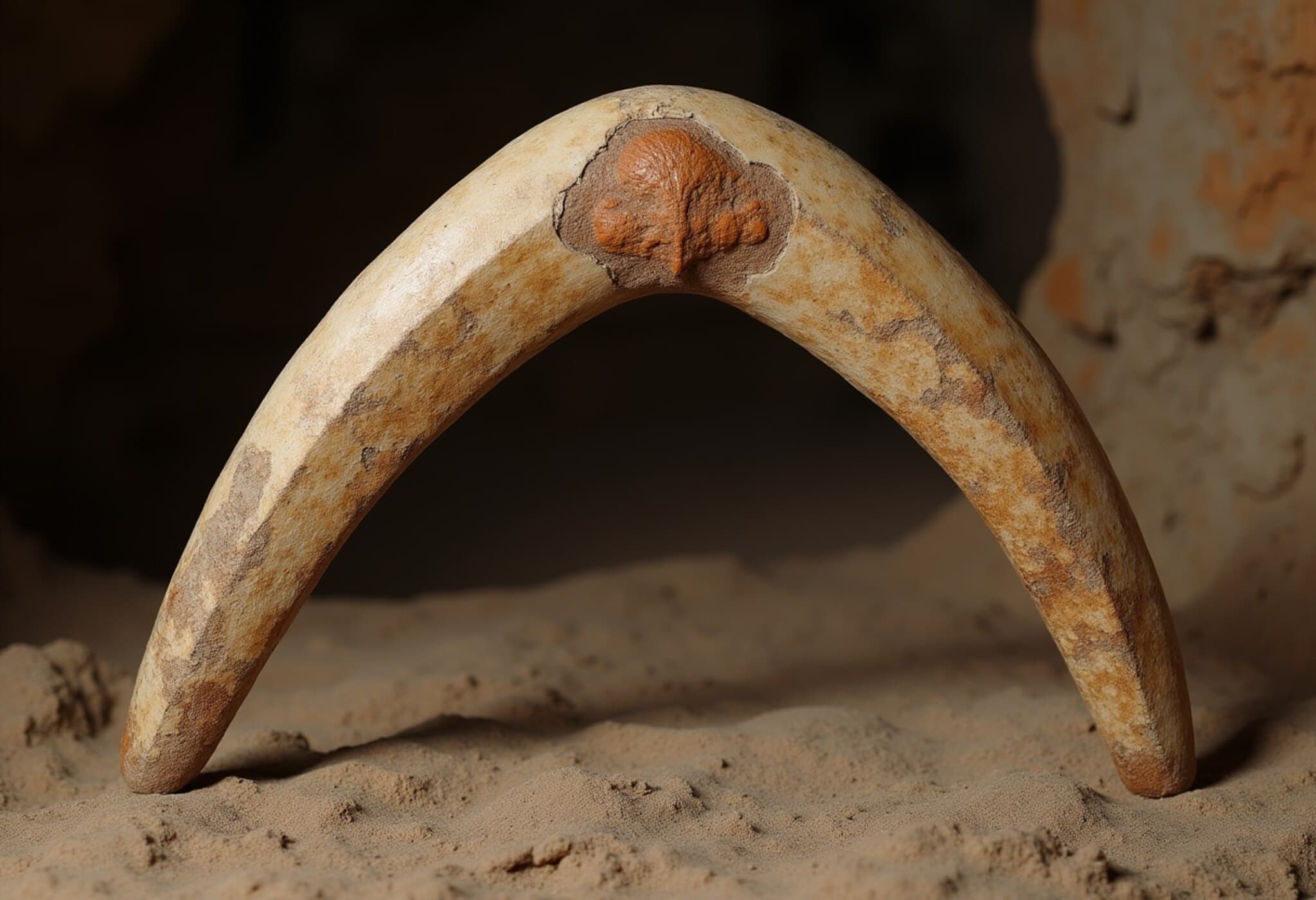Europe’s Oldest Boomerang Dated Between 39,000 and 42,000 Years
A remarkably well-preserved boomerang discovered in a southern Polish cave has recently been dated to an astonishing 39,000 to 42,000 years ago, making it the oldest known example of such a tool in the world. Excavated in 1985 from Oblazowa Cave, this artefact was initially believed to be around 30,000 years old. However, refined radiocarbon dating of animal bones found in the same layers has pushed its age back by nearly 10,000 years.
Crafted from Mammoth Tusks: A Testament to Ancient Skill
This ancient tool stands apart not just for its age but for its extraordinary craftsmanship. The boomerang was meticulously carved from a mammoth tusk, revealing a level of artistic skill and technical expertise among early Homo sapiens that might be unexpected for the era.
Experts emphasize that its creation highlights the sophistication of human populations in Europe during that time. The polished surface and detailed marks on the artefact further indicate it was designed for use by a right-handed individual, pointing to thoughtful tailoring for specific users.
Does It Really Return? The Mystery of Its Purpose
Unlike the returning boomerangs popularized in Aboriginal Australian culture, this ancient instrument was aerodynamically engineered to fly but not to return to the thrower. This key design difference has puzzled researchers, suggesting alternate purposes such as hunting or ceremonial use.
The aerodynamic shape implies it was thrown with precision, most likely to strike prey from a distance or serve symbolic functions within early communities. The absence of the return-flight feature offers valuable clues about its intended role in prehistoric life.
Broader Context: Boomerangs Across Time and Cultures
- The oldest Australian boomerang, made from wood, is approximately 10,500 years old.
- In Europe, a wooden boomerang dating back about 7,000 years was found in Jutland, Denmark.
- A returning oak boomerang dated around 2,000 years old was discovered in the Netherlands.
These finds illustrate how boomerangs, in various forms and functions, have been a part of human technology across continents and millennia, adapted to local environments and needs.
Unveiling a Window into Early Human Behavior
This discovery not only pushes back the timeline for boomerang use but also offers invaluable insight into the cognitive and cultural complexities of early Homo sapiens in Europe. It shines a light on their ability to create sophisticated, purpose-driven tools with specialized uses.
The boomerang’s origin and design invite us to reconsider what we know about prehistoric societies and their ingenuity, reminding us that early humans were far from primitive in their technological advancement.











